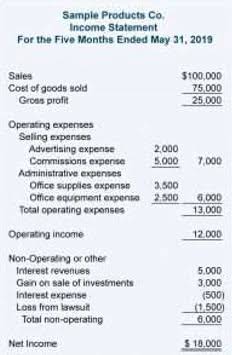
While mixed costs offer many advantages, there are some drawbacks that businesses should be aware of, including difficulty in mixed costs’ forecasting and budgeting errors. By assessing the highest and lowest levels of activity, you can what are mixed costs compare total costs to identify expense patterns (Weygandt et al., 2018). This understanding ensures that prices are set at a level that covers costs and generates a profit, contributing to the financial stability and sustainability of the business.
- A mixed cost contains a fixed base rate and a variable rate that fluctuates with use.
- Distinguishing between mixed and semi-variable costs allows for finer financial control.
- Fixed costs also play a critical role in setting prices for products or services.
- For example, the fixed portion of your equipment lease is a flat $2,000 charge to produce from zero to 10,000 units.
- This understanding helps ensure that budgets are realistic and costs are considered and measured.
- Even if the company does sell or produce a single product, there will still be fixed costs.
How to Determine Overhead and Labor Rate
- However, in addition to this black-and-white classification of costs, there is also a third type, which is referred to as mixed costs.
- Generally, larger production volumes will result in a higher proportion of variable costs and vice versa.
- Costs are fixed for a set level of production or consumption, and they become variable after this production level is exceeded.
- A firm with high fixed costs might struggle during slow periods because those bills must be paid regardless of income levels.
- This makes forecasting expenses tricky without understanding the fixed and variable components through methods like high-low analysis.
- As far as the fixed component is concerned, that does not vary with the output level.
Costs are fixed for a set level of production or consumption, and they become variable after this production level is exceeded. This technique helps people comprehend how changing variables can influence outcomes accordingly. In terms of mixed costs, regression analysis can help determine how a certain change in activity level affects the total cost (White et al., 2020). For example, if a company pays $1,000 in rent and $400 in utilities monthly, the total mixed cost is $1,400.

Introduction to Mixed Cost Analysis
On top of that, your costs go up or down depending on how much you use. Companies view fixed costs as important figures on their balance sheets because they are key indicators of financial health. A firm with high fixed costs might struggle during slow periods because those bills must be paid regardless of income levels.

Mixed results for Nexalin’s transcranial alternating current stimulation trial
Mixed costs, also known as semi-variable costs, are business expenses that have both fixed and variable components. In simpler terms, it’s a cost that fluctuates according to the amount of production and cannot be eradicated like a fixed expense. Where TMC is the total mixed cost, FC is the fixed component, vc is the variable cost per unit and Q is the output level. Mixed costs (also called semi-variable costs) are costs that have https://www.bookstime.com/articles/how-long-should-you-keep-business-records both fixed and variable components.
- Where T is the total trip cost, BF is the base fare which is the same whether you travel 0.5 km or 20 km.
- Mixed costs (also called semi-variable costs) are costs that have both fixed and variable components.
- Both these components are added together to arrive at the total mixed cost of the company.
- For the past 52 years, Harold Averkamp (CPA, MBA) hasworked as an accounting supervisor, manager, consultant, university instructor, and innovator in teaching accounting online.
- Variable costs go up or down based on how much you use them, such as materials needed for production.
- In terms of mixed costs, regression analysis can help determine how a certain change in activity level affects the total cost (White et al., 2020).
- By understanding the fixed and variable elements of a mixed cost, managers can identify areas where costs can be reduced.
How to Create a Break Even Analysis
The fixed component remains the same regardless of production or activity levels, whereas the variable component is more dynamic as it rises with increased output. Generally, larger production volumes will result in a higher proportion of variable costs and vice versa. Examples of mixed costs https://x.com/BooksTimeInc include rent, insurance, management fees, salaries, salaries plus bonuses, and utilities.

As far as fixed costs are concerned, it cannot be seen that they do not change with the level of output at which the company is operating. The monthly salary is a fixed cost because it can’t be eliminated. Even if the salesperson doesn’t sell anything during the month, the company still has to pay the base salary. Wage costs for employees who are paid a monthly salary plus commissions are a good example of mixed costs. This is a common compensation package for salesmen and sales reps. They usually receive a small base salary and commissions based on how many sales they make during the period. These utility expenses are super important for accountants to understand because they mix both fixed and variable costs together in one bill.
In this case, rent is the fixed component, and utilities are variable (Bragg, 2019). Mixed costs can be calculated by adding the fixed and variable components together. However, businesses may use other more complicated methods such as the high-low method, regression analysis, and scatter graph method.
